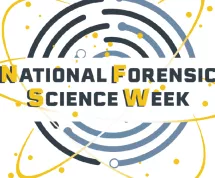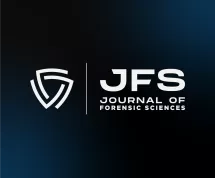Search
Explore content from JFS, ASB, the AAFS Newsfeed, and other content using the search bar or filters.
The impact of antimeric lower limb length asymmetry on adult stature estimation
Antimeric lower limb length asymmetry is frequently noted when measuring human skeletal remains. As lower limb bones are often used to estimate stature from unidentified remains, the forensic anthropologist who notes a disparity must then determine which lower limb bone or bones ...
National Forensic Science Week
National Forensic Science Week recognizes the contributions that forensic science makes to the criminal justice system.


2023 AAFS Conference—Presidential Invitation to Friday Night Celebration
Monitoring cell loss through repetitive deposition
Touch DNA deposited on items can be visualised by using fluorescent nucleic acid staining dyes. It might be expected that if a person contacts items multiple times, then at each contact fewer cells should be transferred and deposited. Here we report on the use of Diamond Dye (DD)...
Hyposphagma, positional asphyxia, and acute intoxication with psychoactive substances
Hyposphagma or subconjunctival hemorrhage is extensive confluent bleeding located between the conjunctiva and episclera. It can develop after trauma or the Valsalva maneuver and hemorrhagic diathesis and vascular diseases, hypertension, arteriosclerosis, and diabetes are the pred...
Seeking Nominations for Criminalistics Section Awards

Criminalistics Section Seeking Liaisons to ASB Consensus Bodies

Female murderers who mutilate or dismember their victims: An exploration of patterns and...
Attributes and behavioral patterns of female homicide offenders have been less explored than those of males, particularly in crimes that involve aggravating factors such as dismemberment and mutilation. This study explored the patterns of female murderers who engage in postmortem...
Impact of cannabis‐infused edibles on public safety and regulation
Popularity of cannabis‐infused products has bloomed since legalization for recreational use of marijuana started. Consumption of cannabis edibles has steadily increased, as restrictions on recreational cannabis smoking have become tighter. This phenomenon enhanced the possibility...
Experiences in successive forensic analysis of GSR and DNA traces collected on a single...
Gunshot residue (GSR) and deoxyribonucleic acid (DNA) analyses are used in the reconstruction of shooting incidents involving firearms. In both fields, adhesive tapes are commonly applied to recover traces. Using a simultaneous sampling approach for retrieving both types of trace...
Forensic Nursing Science Section News


Assessment of detection limits for dyed and mounted textile fibers using Raman...
Trace evidence in the form of textile fibers can be used to link objects and places during an investigation. Raman spectroscopy is a well‐established technique that has been used for the examination of various pigments, paints, inks, and dyes. The objective of this study was to d...
Anthropology Section Awards Reminder

Analysis of indole and indazole amides synthetic cannabinoids by differential Raman...
A simple, rapid, accurate, and non‐destructive method was developed for the determination of cannabinoids, combining principal component analysis and multi‐layer perceptron neural network to classify indole and indazole amide synthetic cannabinoids. Under the experimental conditi...
Using social network analysis to examine gun violence
Research has found gun violence is a social contagion that spreads from one individual to another. To understand the social networks of violence, previous research has used social network analysis, a tool that explores the relationships between social actors. Most of the prior re...
Standard for Clinical Veterinary Forensic Examination

An Introduction to ANSI/ASB Standards 119, 120, and 121
Defining the Analytical Scope and Sensitivity Required for Human Performance and Postmortem Forensic Toxicology